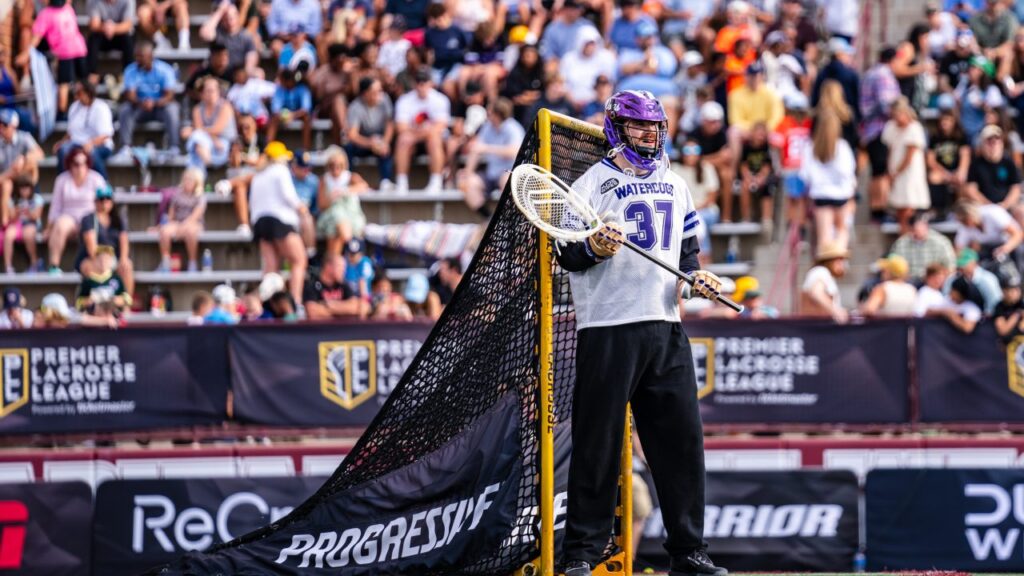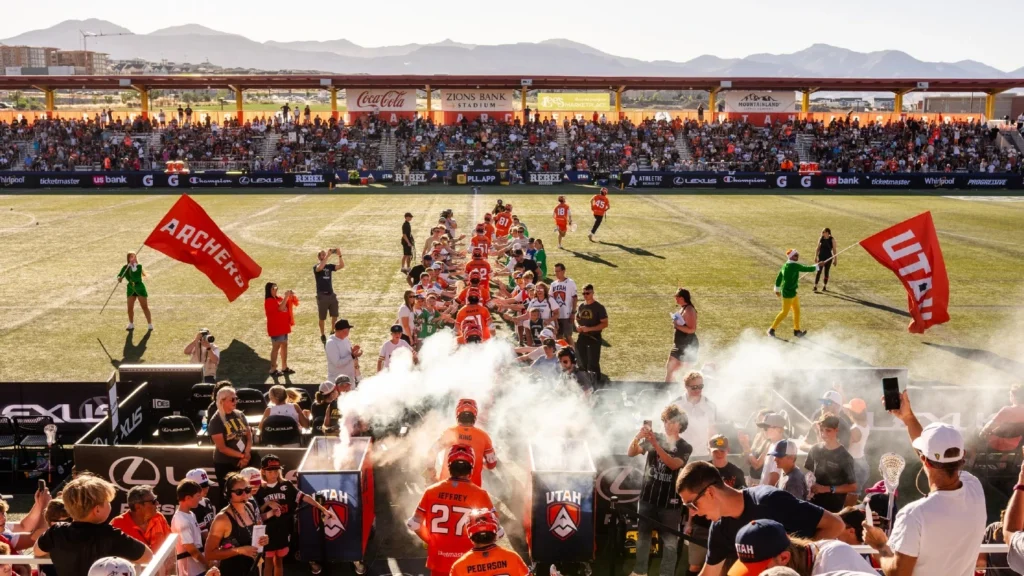
Film Review: How Dillon Ward takes the Waterdogs from good to great
By Wyatt Miller | Aug 15, 2023
Every goalie has their own style, but Dillon Ward’s doesn’t really have a name.
Ward takes a hybrid approach with a high arc and heavy box influence. The Orangeville, Ontario, native has combined different styles to create an instinctual flair that makes him one of the hardest goalies to read.
“His playing style in net is different than a lot of the goalies in this league, so I think it’s a little bit more difficult for teams to scout,” said Ethan Walker.
This season, Ward has the highest save percentage of his pro career (57.8%), ranking third in the league. But along with his shot-saving abilities, Ward provides invaluable defensive communication and dictates an elite transition attack. It’s no coincidence the Waterdogs are 4-0 when he suits up.
In his return from paternity leave against the Atlas, “Wardo” showed off his dad strength by exhibiting everything that makes him one of the league’s best.
A Unique Shot-Saver
Ward stands out because of his large area of operation inside the crease, otherwise known as his arc. Most taller goalies, and Ward definitely qualifies at 6-foot-5, play with a lower arc, meaning they stay closer to the goal to use their height advantageously. But Ward’s athleticism gives him a longer leash in the crease.
He often stands well in front of the goal line when the ball is farther out, and slides to the outer edge of the crease when smothering low balls. On high shots, Ward’s quick reflexes and intuition make him one of the most snag-happy goalies in the league.
But how does he distinguish where to start and how to lunge for the save when he doesn’t know where the shot is going? It’s all about the reads.
“Now when I’m playing, you can tell when a player is going to shoot the ball or make a pass or dodge. Now, it’s just more or less gauging if I have a chance to take that step out,” Ward told Austin Owens in 2021. “For a guy who’s taking a stepdown, I probably will take that step out to try and cut down the angle and try to make them hit a perfect shot rather than just sitting back.”
On Saturday, Ward was saving shots all around the crease, featuring some spectacular step-outs. In the second quarter, Ward’s unpredictabile movements cost the Atlas a wide open look in the middle of the defense. On the right wing, Justin Guterding lost Matt Whitcher on the screen fake before collecting the pass from Jeff Teat.
When Ward saw Guterding get his hands free in the middle, he stepped out to the edge of the crease and then fell to the turf for the kick save. Ward recognized the low release and, almost like an infielder playing a ground ball, stepped up to smother the short hop rather than waiting to get caught off guard by an in-between bounce.
Not a lot of goalies would cut down on an open, straight-ahead shot from midrange. But where most goalies rest on their heels, Ward plays his instincts and knowledge of the opponent. It’s these types of saves that separate his style from the rest and make him so difficult to read.
Quarterback of the defense
In the loss to the Cannons two weeks ago, the Dogs were outscored 7-1 in the fourth quarter, and Matt DeLuca took responsibility for some of those late struggles.
"I think we need to be better at communication... and that starts with me,” DeLuca said. “I see the whole field from the net and I gotta do a better job of putting guys in the right spots and making sure we can cover up those skip lanes, get to gloves and make them take contested shots.”
Supplying veteran insight from the cage, Ward’s viewpoint is vital for the rest of the defense. And when the fatigue starts to set in, positioning becomes even more important. Against the Atlas on Saturday, some of Ward’s directions could be heard from the broadcast – it was constant and resulted in multiple caused turnovers.
In just a few minutes of second-half play, Chris Sabia caused two turnovers with Ward in his ear. The first was an unbelievable backdoor check, and the second resulted from the goalie’s instructions.
As Bryan Costabile started his dodge down the left alley Ward shouted out “Sabia” followed by “get down” as Costabile traveled inside the arc. Sabia switched off Chris Gray to help check the ball free, and Eli Gobrecht picked up the ground ball.
If Costabile had fought through the contact, he would have turned around to see a wide-open Gray in the middle of the defense. Ward saw an opportunity to become the aggressor on defense and took it, leading the Dogs to 10 caused turnovers compared to Atlas’ six.
This play exemplifies Ward’s communication style. Once he saw the righty dodge on his weak side, he called for the help-side defense, even though it left one of the team’s best shooters open. Just as he raises his arc when others wouldn’t, Ward makes that double call when others won’t.
The Waterdogs’ proclivity for causing turnovers, along with Ward’s diverse save style, makes this aggressive mindset successful. And, no matter the situation, Ward’s faith in his teammates and calming commands never waiver.
“I think Wardo is just the ultimate pro,” said Michael Sowers. “His presence in the locker room and on the field, it just feels like his temperature never changes no matter what the circumstance is in the game, and I think that boils over to everyone else.”
Transition Starter
The best goalies expand their impact past the pipes they play between, and that certainly applies to Ward. The Waterdogs rank first in the league in transition goals with 19, and Ward is a big part of that. In fact, their first goal of the game on Saturday was a direct result of Ward’s transition prowess, and he earned a second assist.
After making a clean save, Ward heaved the ball past midfield, hitting Ryland Rees in stride as he left two defenders in the dust. Once he got inside the arc, Rees passed to Sowers cutting to the doorstep, and he finished low on the crease dive to get the Dogs on the board.
This is another instance where Ward ran with his assertive instincts rather than playing it safe. The pass went so high that it exited the screen view, and he still put the ball where only Rees could catch it. After that, the Dogs just played to their identity and finished fast, sparking a six-point first quarter.
Apart from saving shots in a unique way, Ward’s intelligence as a communicator and transition initiator give the entire team a boost. That’s why the Waterdogs go from good to great when he’s in the lineup.




